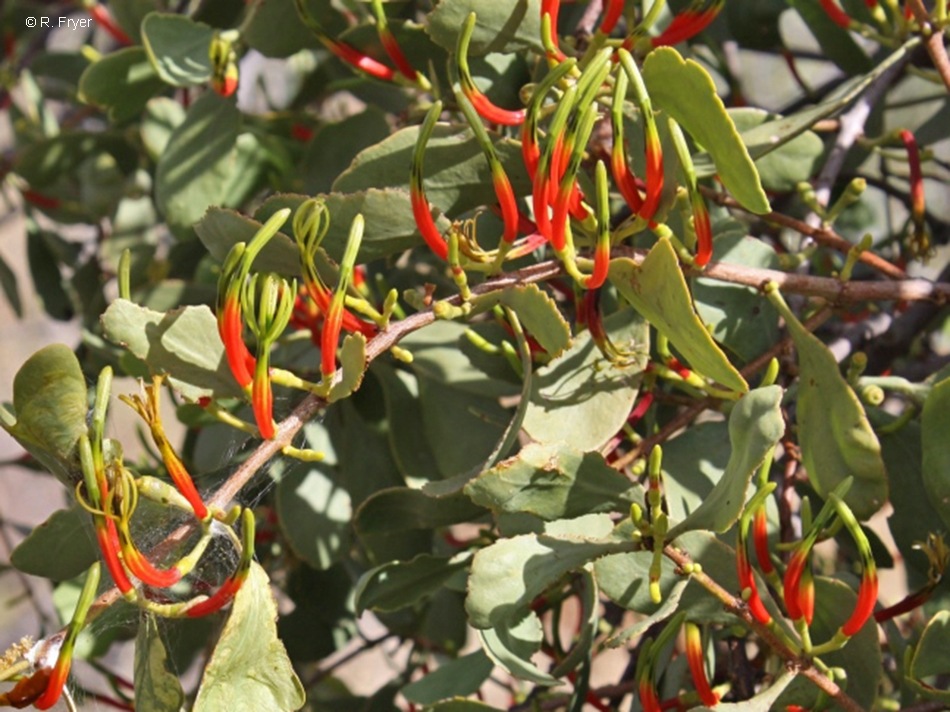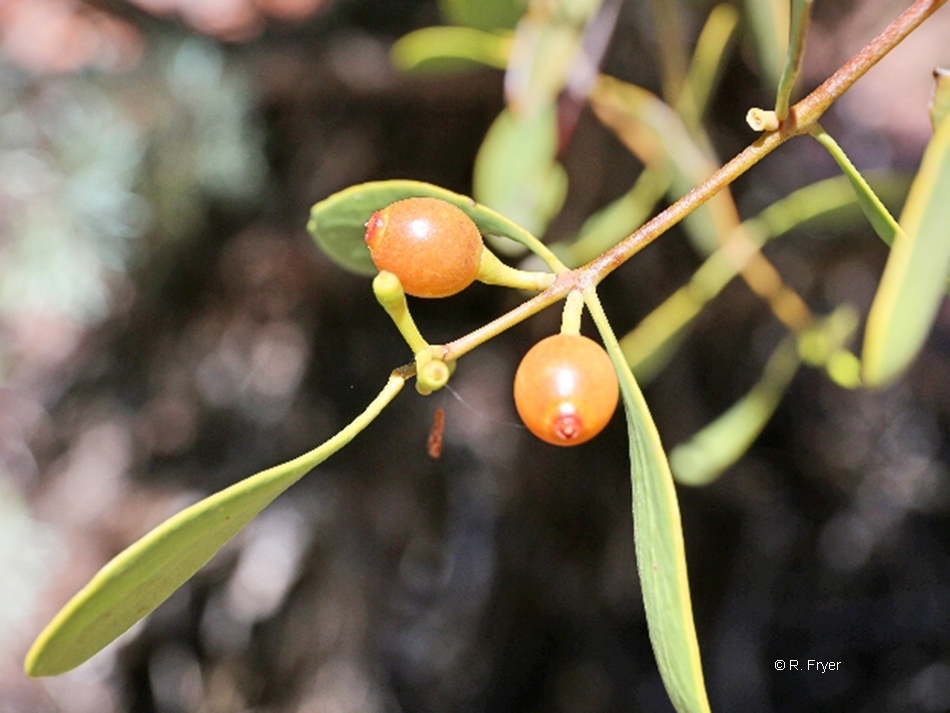Australian Tropical Rainforest Plants - Online edition
Lysiana spathulata (Blakely) Barlow





Barlow, B.A. (1963) Proc. Linn. Soc. New South Wales 88: 139.
Aerial stem-parasitic shrub. Epicortical runners absent. Branches pendulous.
Leaf blades brittle, breaking alsong a straight line when bent back on themselves. Leaf blades obovate, about 3-7 x 1.1-3 cm, petioles about 1-5 mm long. Lateral veins run almost the full length of the leaf blade. Venation not very obvious on mature leaves, more readily seen on new leaves. Lateral veins 3-6 no each side of the midrib.
Flowers borne in a pedunculate 2-flowered umbel. Flower stalks about 3-7 mm long. Peduncles about 1-5 mm long. Calyx about 0.6-1.5 mm long, 6-toothed at the apex or obscurely toothed. Corolla tube curved, about 34-45 mm long, split down one side, lobes about 12-20 mm long. Corolla red at the base, yellow towards the middle and green at the apex. Anthers transversely septate, about 4-5.5 mm long, staminal filaments about 2-6 mm long. Pollen cream. Ovary about 3 mm long. Style about 33-36 mm long, articulate about 1 mm above the base. Stigma globular. No locules or ovules visible in the ovary.
Fruits ellipsoidal, about 13 x 7 mm. Pedicel about 4 mm long. Seeds about 7 x 5 mm, surface marked by 6 deep longitudinal grooves. Embryo about 7 x 1 mm. Radicle green, tuberculate with short finger-like trichomes at the apex. Cotyledons completely fused to aone another.
Features not available.
Endemic to Australia. Occurs in WA, NT, NEQ and CEQ. Altitudinal range in northern Australia from near sea level to 800 m. Usually parasitic on open forest species but also found on monsoon forest species. Also widespread in inland areas.
Often found on Parsonsia plaesiophylla, also on Carissa and Capparis.





